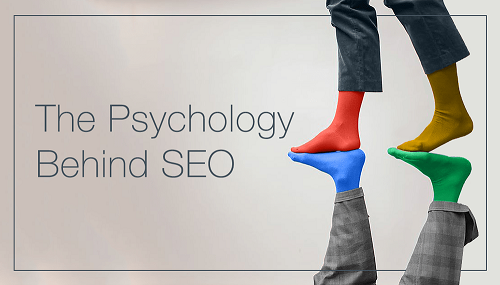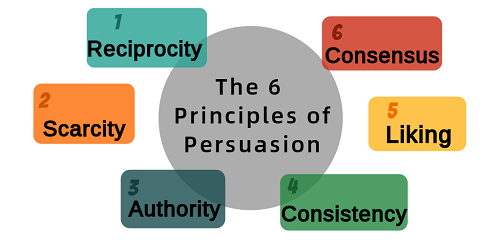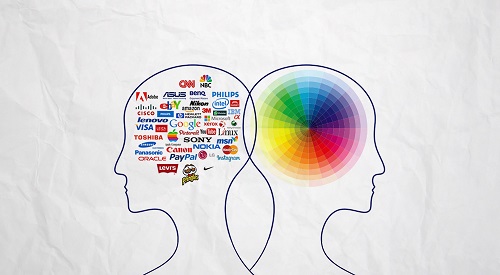Market Psychology and SEO

There’s a lot more to Search Engine Optimization (SEO) than what meets the eye. Your SEO strategy for writing your title, description, and content is important and may help you rank, but your overall approach to ranking well shouldn’t start there. Many SEO experts state that success begins with understanding the user – what it is that they commonly search for and how they go about finding answers and solutions to their queries. But more importantly, you must be mindful of how their choices affect your website.
In this article, we discuss the psychological aspects of the user and how you can use that to improve your SEO. Many believe that having a better understanding of the science behind the mind of the customer will enable you to create intentional, more on-target content for your website.
Understanding the User and How He or She Thinks
One of the traditional first steps to knowing your user is to identify the kind of language and terms they use when searching for a product or service that you provide. But that’s not enough. You must also determine why they search for things the way that they do. Knowing the how and why of user search is a good starting point to a psychological approach in SEO.
Users differ like day and night, and so do their needs and preferences. But in this case, it’s possible to generalize the different types of users into two categories.
Firstly, you get the type of user that searches “how-to” phrases. This is your DIY kind of person looking for practical ways to improve a particular skill. They may also look for detailed step-by-step information on how to do something.
The second group is made up of people that search “why does” phrases. They are the ones who are doing research and looking for answers.
Next, we uncover how these two groups of people think and weigh their options during the decision-making process.

The User Decision-Making Process
Every potential customer goes through a thought and decision-making process which you must understand and (for lack of a better word) manipulate. We’ve identified five phases in the decision-making process before he or she eventually signs up, buys, or effectively engages with your product or service. The main phases of this decision-making process are identified as:
- Problem Recognition: What is your search query? What are you looking for?
- Search for Information and Solutions: Research suggests that 93% of the time, people turn to search engines like Google for a solution to their problem.
- Evaluation of Results and Alternative Solutions: Google will then produce hundreds of results for that query. But people do not always opt for the first pop up. Instead, they continue searching, looking for something that most satisfies their need.
- Purchase: Only after the above-mentioned steps will they decide to buy, sign-up, etc.
- Post Purchase: After buying a product or signing up to use a service, some customers may even come back to the shop or website to express their dislike or like for whatever it is that they bought from you.
Combining SEO with Psychological Principles of Persuasion
Taking a psychological SEO approach means getting in the mind of the user, seeing how and why they become interested in your product, and persuading them to act. Studies suggest that you can convince a customer to take action by being mindful of human emotions and how they play a role in the decisions we make.
Yes, emotions not only affect important life decisions but can affect your search decisions too. Considering human emotion and how people generally feel about products can help you create content that is persuasive without sounding spammy or like a forceful sales pitch.
There are a number of psychological SEO principles of persuasion that you can use to lure in the masses. Here are some examples of the principles that you can use to convince potential customers that you are the best in your industry:

Priming
If you have ever played the game where you call out a word and another person responds with the first thing that comes to mind, then you will have an idea of how priming works. It describes the notion of being exposed to one stimulus and having that affect how you react to another stimulus.
By using subtle priming methods, you could subconsciously help your web visitors remember key information about your brand or the content of that specific page. You may even be able to influence their buying behavior.
So, what are you priming your customers for on your website? Is it that you are an authoritative source in your industry? Is it that you are a convenient option? Or are you focusing on selling the idea of fun and entertainment?
Reciprocity
If you have ever received a mint or complimentary item with your restaurant bill, then you’ve been on the receiving end of reciprocity.
There are a lot of ways to take advantage of reciprocity. Retail businesses can show this by giving away a free branded t-shirt or sending a hand-written note with the purchase. These are simple gestures that go a long way. The main idea here is to give away a free item before you ask for something in return.
Clustering Information
If people are coming to your site for information, you want to make sure that your content is structured well and is easy to grasp. This could be the difference in whether people recognize your site as a reliable source of information or not.
Research suggests that the average person has a limited amount of space in their short-term memory. This means that they can only remember short pieces of information at a time. To cope with the short-term memory issue, most people turn to cluster similar pieces of information together. So when you’re creating content, keep clustering in mind. Ask yourself: “How can I structure the key messages and ideas in my content to increase memory retention?”

Incentives
As people, we are naturally attracted to incentives, discounts, and good deals. This can include a sale, a free purchase gift, or a promotion. Headlines like “Get 50% Off” or “Buy 1 Get 1 Free” tend to grab our attention and we are likely to enquire more or click there. You can include incentive-based tags, headings, and content in your SEO strategy as a way to encourage people to take action.
Social Proof
People value the opinions of others, sometimes to the extent where it influences their own opinion. People are also more likely to do something that others have done before them. We know that you cannot tell people what to say, but you can do your best and hope that convinces them to spread positive word of mouth for your site or business. So, you should always hope to get positive Google reviews as this may help to boost your position in search results.
Testimonials are another great way to send out positive reviews for your site and to build trust between you and your customers.
Visuals
Studies show that 90% of information transmitted to the brain is in a visual format. Humans identify images in as little as 12 milliseconds. This is one reason why multimedia like images and videos should form part of your SEO strategy. This is the kind of information most likely to be engaged with by potential buyers.
Rarity
If something feels like it’s a rare, exclusive, limited edition, once in a lifetime opportunity, you tend to give it a higher value. Everyone wants something unique and special, so make them feel like that’s exactly what they’ll get at your site.
Colour Psychology and SEO
In addition to the principles of persuasion and understanding how your potential customer thinks, there are other ways in which you can influence someone’s decisions. One of the neglected parts of the psychological approach is recognizing color and its role in decision making.
Research in the field of color psychology says that color can be used as a marketing tool because it affects how we think and react. It acts as a visual indicator, telling us where to look and how to interpret something. It can also tell you what information is important and what isn’t.
We don’t all react the same way to color because our reference for it differs. This includes differences in past experiences, events, cultures, and memories. But, there are some commonalities to how people perceive and treat color. This is what we’ll look into next.

The Color Red
Red is said to be a very powerful color and is a good way to show human emotion like love and affection. But, in some cases, it can also portray feelings of fear and caution. Remember this the next time you are designing your website or looking for images to include on a page where you are looking to evoke a different kind of feeling or emotion.
The Color Green
Green in most instances resembles harmony and balance. It can also represent growth and newness. Because green is a color most commonly seen in nature, it can bring about feelings of calmness and make you feel at rest. So, if you are looking to emphasize wellbeing, rest and peace then green is your color.
The Color Blue
Blue represents trust, reliability, and responsibility. This is arguably one of the most-liked colors in the world because of what it represents. Looking at the blue can result in mental calmness and ease of mind.
The Color Gold
Gold is described as a luxurious color. It represents wealth, prosperity, and glamour. But, too much gold can come across as egotistical and self-righteous. Gold is a color best used sparingly. It is meant to compliment something, not be the main attraction.
The Color White
White is more obvious than some of the other colors. It generally represents purity, cleanliness, and hope. It also serves as a good background color to encourage the flow of ideas.
The Color Black
Black, like red, is a contrasting color that can mean both good and bad. Black can represent sophistication, elegance, and professionalism. But, it can also portray evil and wickedness. Nevertheless, it’s a striking color that’s best used as text and not so much in pictures and videos.
Overview
Like we’ve mentioned previously, there’s a lot that goes into making your SEO strategy successful. Marketing and color psychology are but a few of the many techniques that you can explore on the journey to discovering what works for you, and ultimately what works for SEO and Google.
We encourage you to engage with this article, we’d love to hear what you think. And if you have any valuable information to add, even better! Drop us a note in the comment section, we look forward to engaging with you further!


